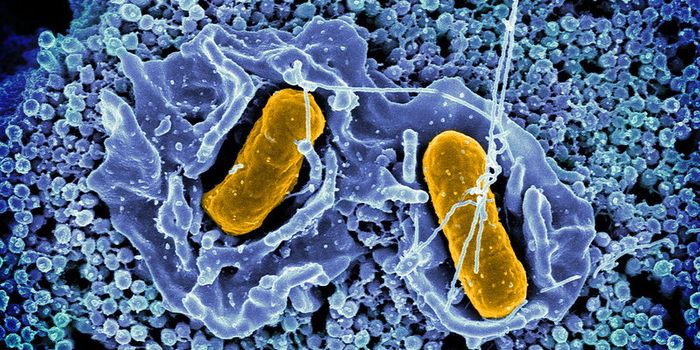Nanobodies May Prevent Complications From Infection in Transplant Recipents
In recent years, scientists have turned their attention to small antibodies that are produced by animals like sharks, camels, and llamas, which are called nanobodies. Researchers have now engineered a nanobody that's able to hunt down the human cytomegalovirus (HCMV) when it evades the immune system. Once the infected cells have been identified, the immune system is able to destroy the virus.
It's thought that rates of HCMV infection are extremely high in some countries, and many people are infected worldwide. Luckily, the virus does not cause symptoms in many cases. But it can sit dormant inside of white blood cells for decades. In all that time, it can remain undetected and unperturbed, waiting for an ideal time to reactivate. Normally, it doesn't present a major problem when reactivation happens. But in people with weakened immune systems, like transplant recipients that must take immunosuppressants so their new organ won't be rejected, a reactivation of HCMV may be devastating.
There aren't any vaccines available for HCMV yet, and antiviral drugs are often ineffective against the virus or cause major side effects. New research, however, may help change that.
Reporting in Nature Communications, scientists have created a nano body that can smoke the virus out of its hiding place.
In humans, antibodies have two heavy and two light chains of molecules that can recognize binding partners or antigens on cell surfaces. But both chains aren't necessary for some antibodies in camelid animals; one fragment of the antibody, called a nanobody, can recognize an antigen on its own.
"As the name suggests, nanobodies are much smaller than regular antibodies, which make them perfectly suited for particular types of antigens and relatively easy to manufacture and adjust. That's why they're being hailed as having the potential to revolutionize antibody therapies," explained co-first study author Dr. Timo De Groof of Vrije Universiteit Amsterdam.
In this work, the researchers made nanobodies that can bind to a viral protein called US28 on the surface of cells carrying a latent HCMV infection. When cells infected with the virus were exposed to the nanobody, it attached to the US28 protein and kept the virus in a dormant state. Immune cells could then recognize the infection in the cell and destroy the virus. This strategy may purge latent infections.
More work will be needed to test the safety and effect of this approach, but the researchers are hopeful that this strategy can help stop CMV infections in transplant patients.
Sources: AAAS/Eurekalert! via University of Cambridge, Nature Communications









